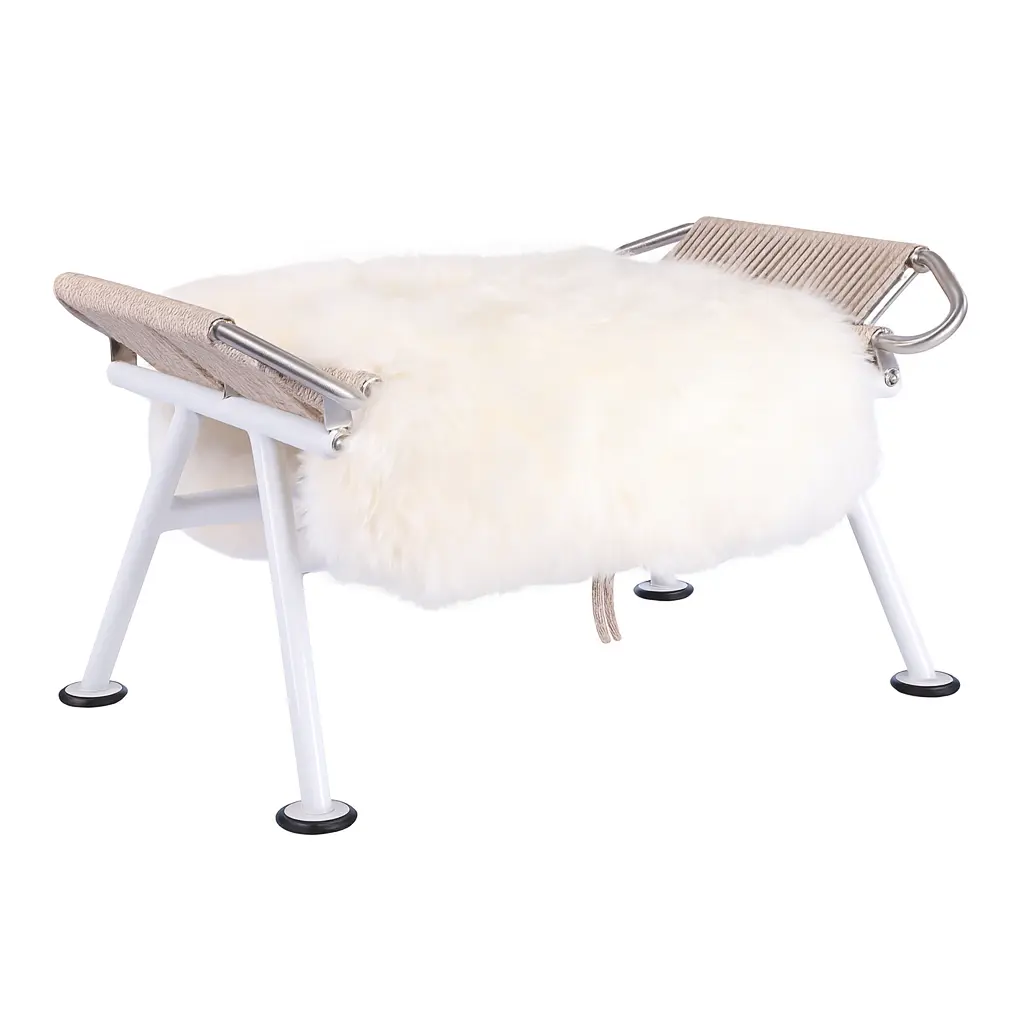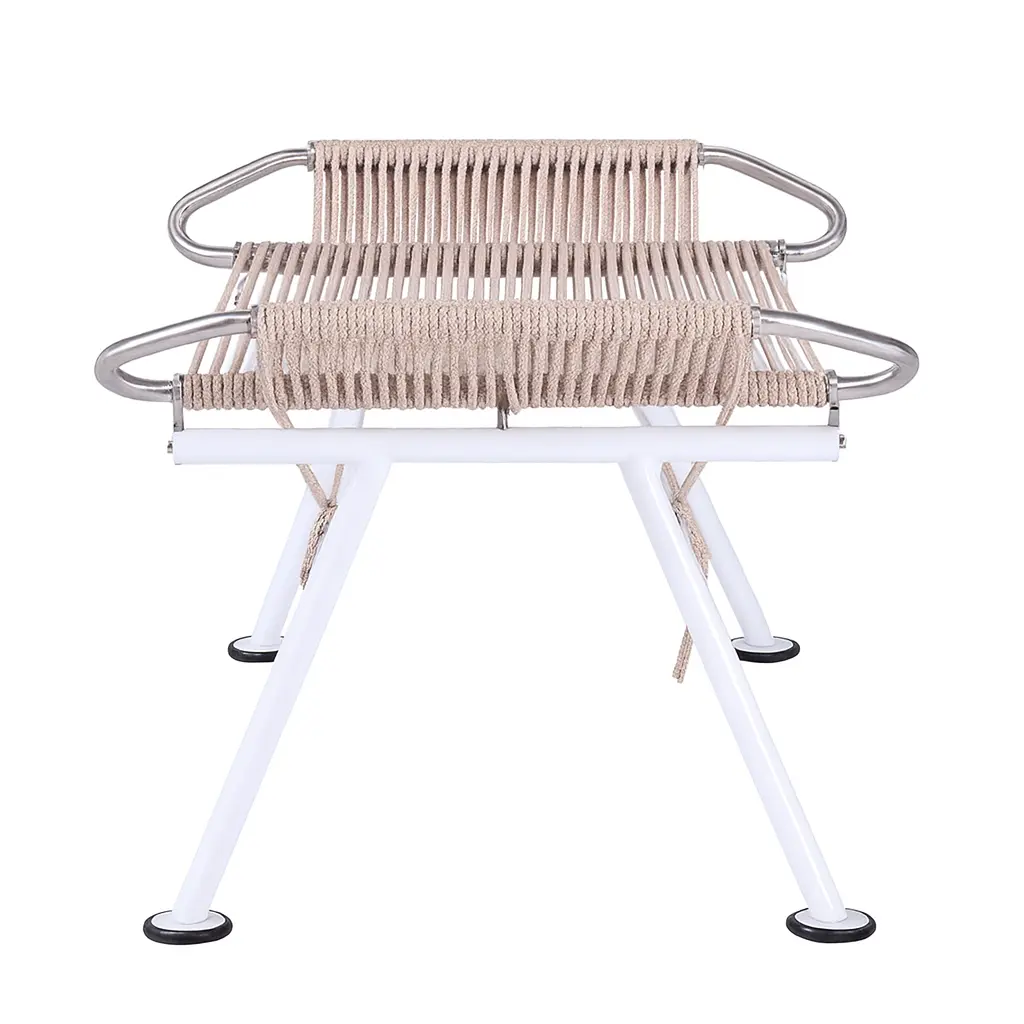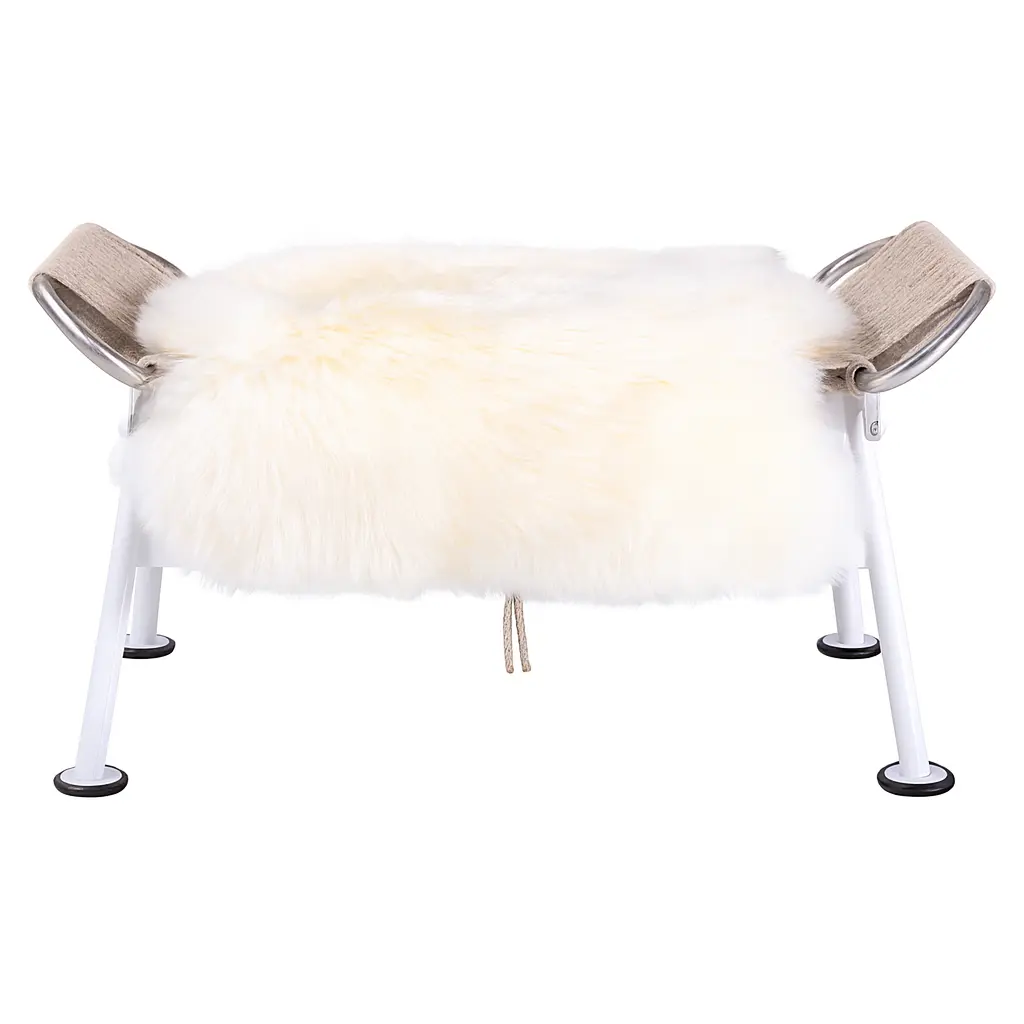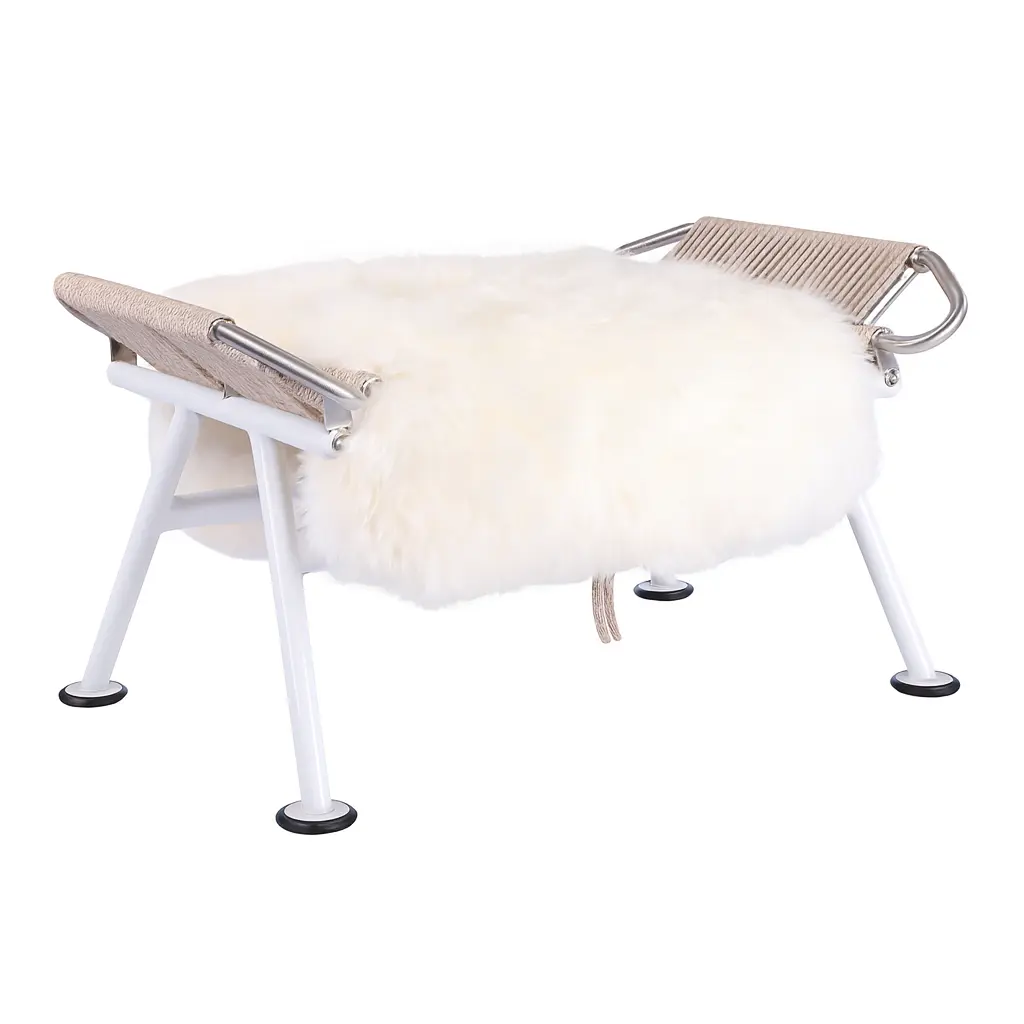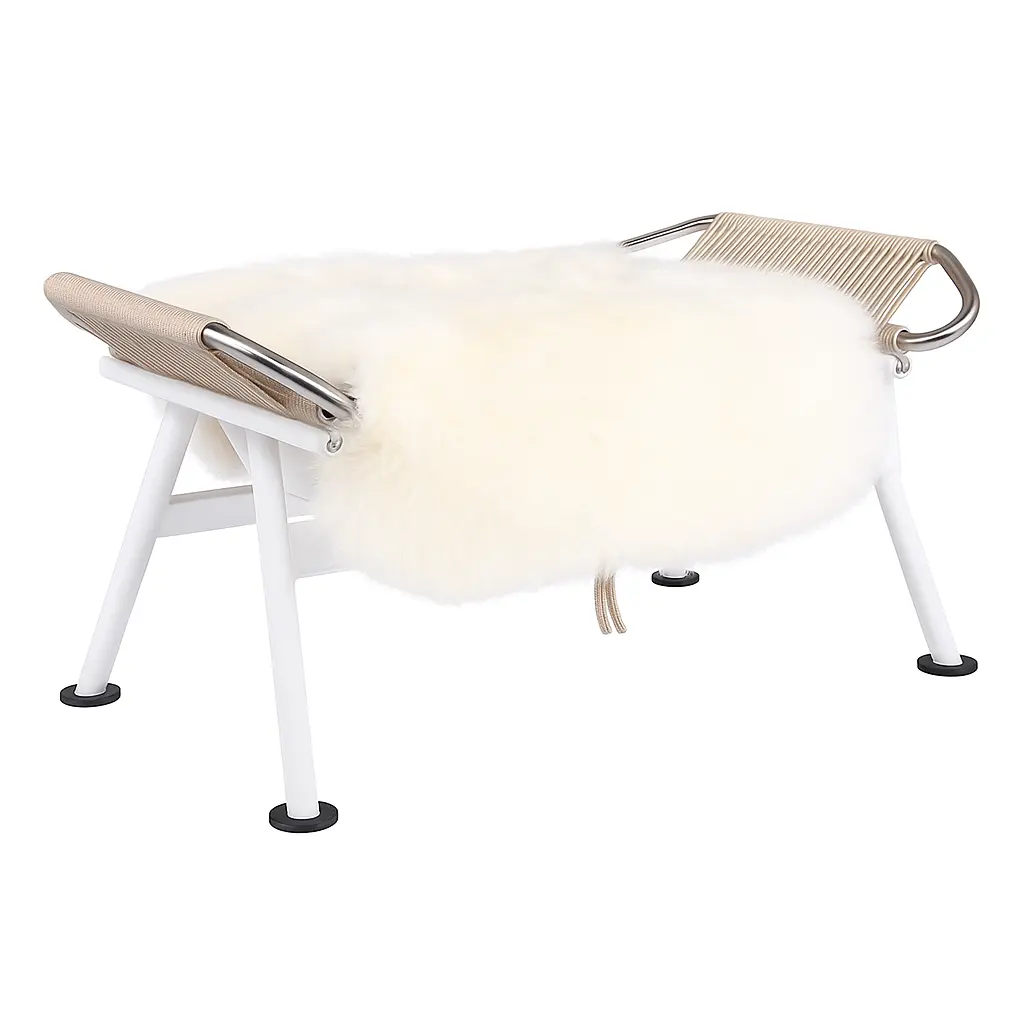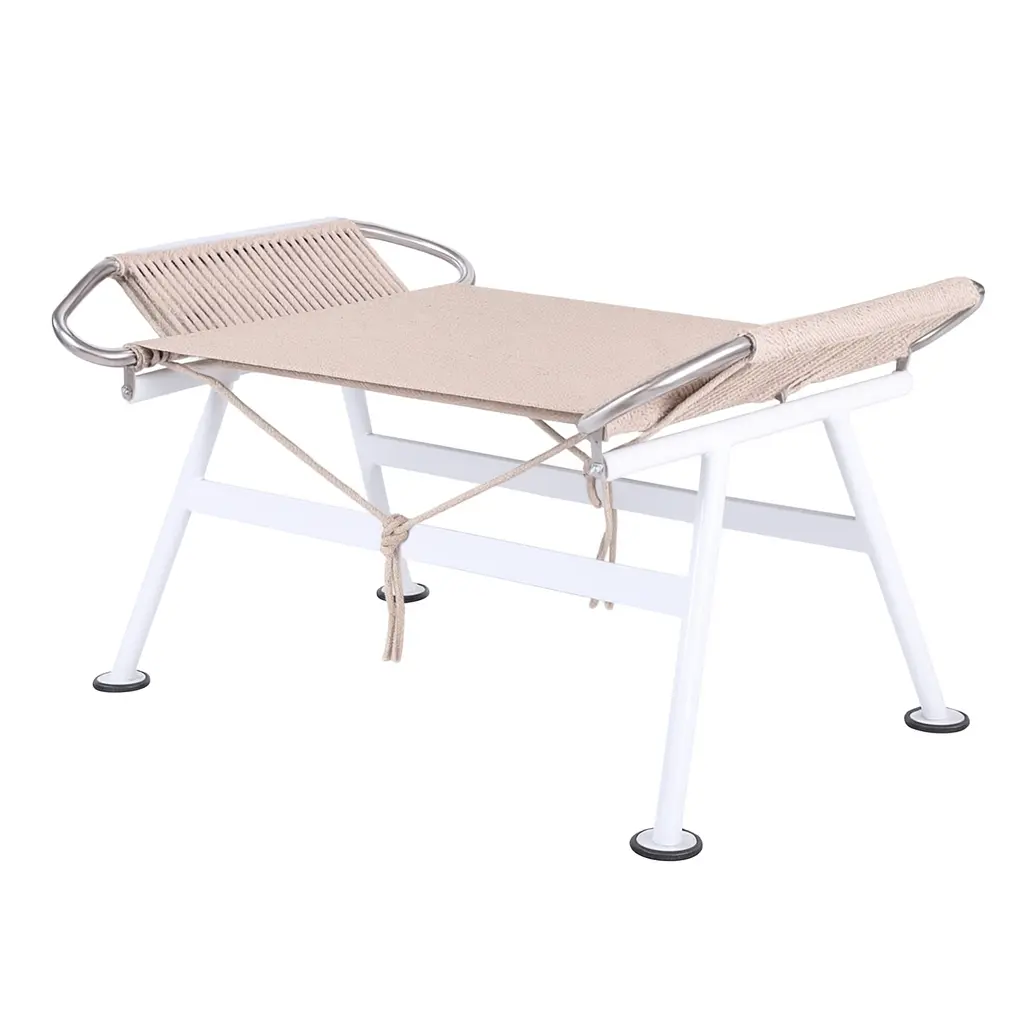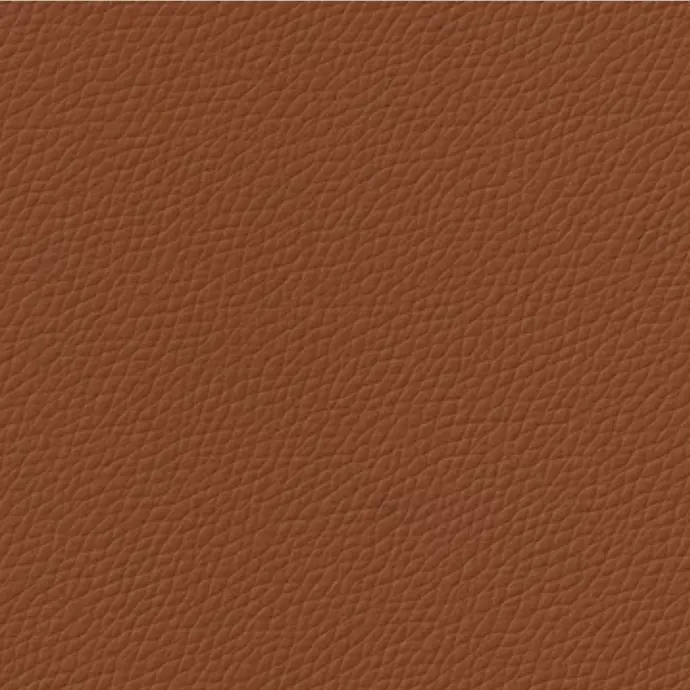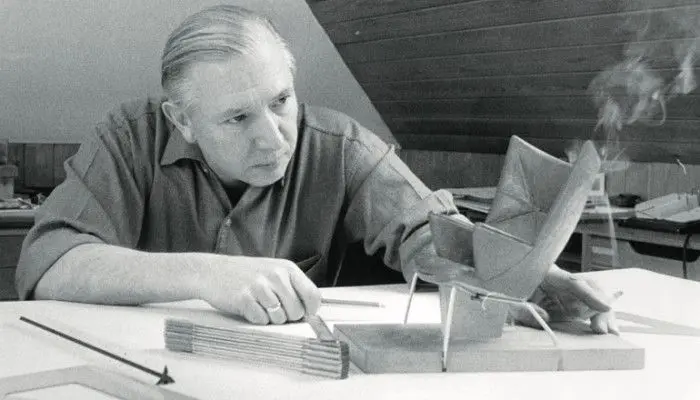Flag Halyard Ottoman
30-Tage-Geld-zurück-Garantie
Versand: 2-3 Geschäftstage
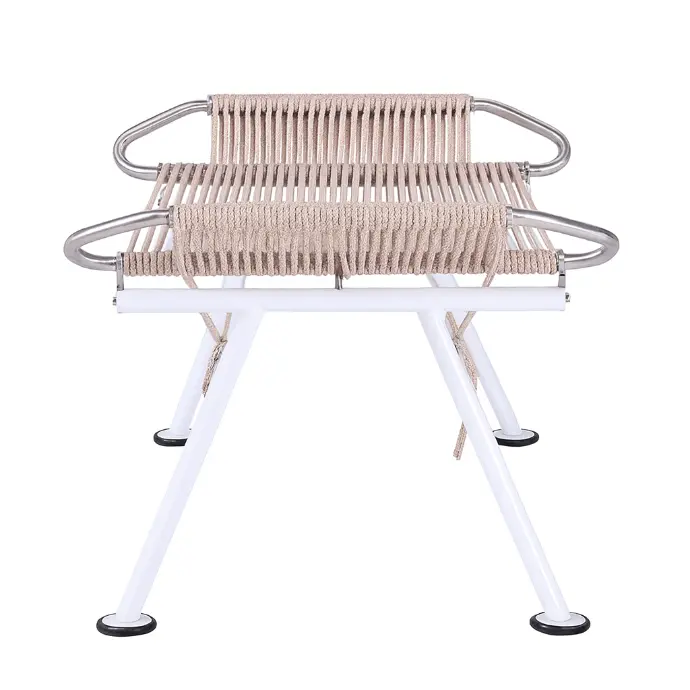
Produktdetails
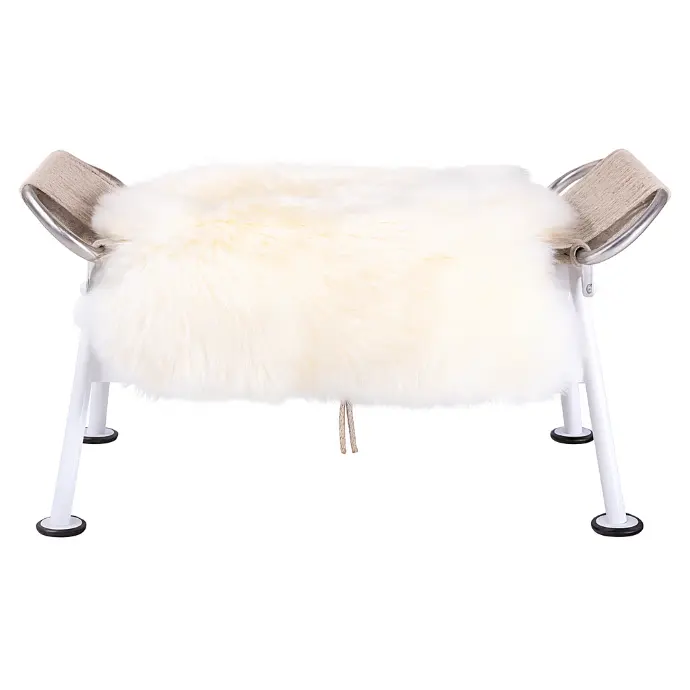
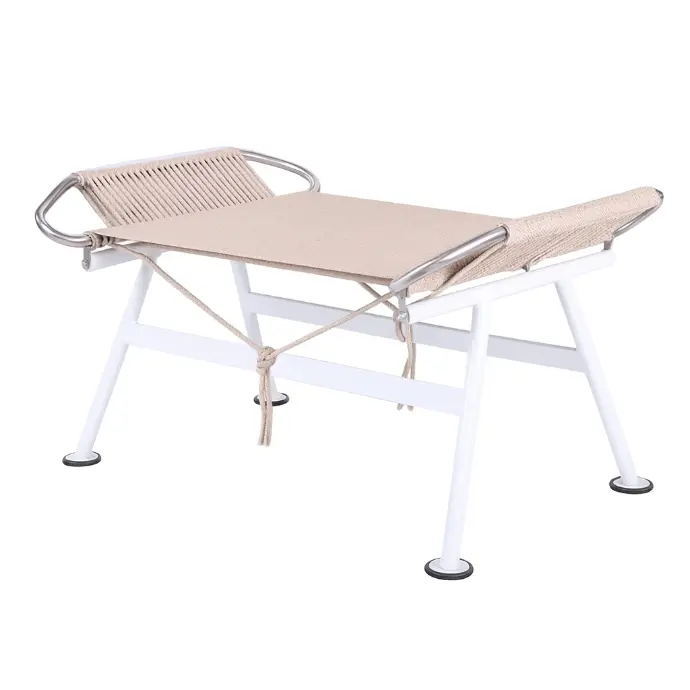
Materialien & Oberfläche
The Flag Halyard Ottoman features a polished stainless steel frame paired with a hand-woven seat in natural flag halyard cord. The top cushion is upholstered in aniline leather or covered with a soft sheepskin pad, complementing the matching Flag Halyard Chair. The combination of durable steel and organic fibers embodies Wegner’s signature harmony between modern technology and natural materials.
Designed as a companion piece to the Flag Halyard Chair, the ottoman provides ergonomic leg support and visual continuity. The flexible woven surface adapts to body weight, while the padded cushion adds softness and warmth. Lightweight yet robust, it can serve as a footrest or standalone stool. The Flag Halyard Ottoman completes the lounge ensemble, offering both functional comfort and sculptural elegance.
Komfort & Funktionalität
The ottoman’s frame is formed from precision-bent stainless steel tubing, welded and polished for strength and stability. The woven seat is created by tensioning flag halyard cord around the frame, providing both flexibility and resilience. The cushion is filled with dense foam and finished in leather or sheepskin, secured with concealed straps. Every joint and weld is hand-finished for structural integrity and refined detailing.
Konstruktion
Größe und Verpackung vom Produkt
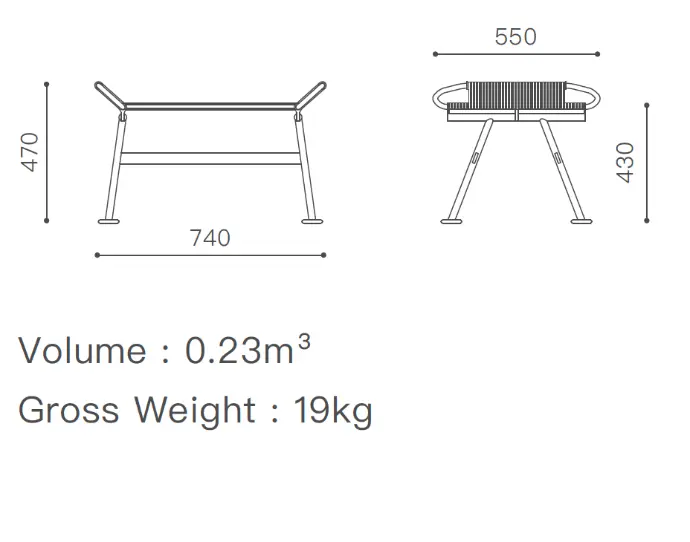
Product Dimensions
Sitz muss auf das Gestell geschraubt werden

Karton Abmessungen
verpackt in 1 Karton
Hans J. Wegner
Hans J. Wegner (1914–2007) was a Danish furniture designer, renowned as the “Master of the Chair” for creating over 500 chair designs that epitomize Scandinavian modernism. Trained as a cabinetmaker and educated at the Danish School of Arts and Crafts, Wegner emphasized organic simplicity, craftsmanship, and comfort. His most iconic pieces include the Wishbone Chair (1949), Round Chair—famously used in the 1960 Kennedy–Nixon debates—and the Peacock Chair. Wegner skillfully merged traditional woodworking techniques with modern aesthetics, producing timeless, functional furniture. His dedication to form and function secured him a central role in shaping 20th-century Danish and international design.
